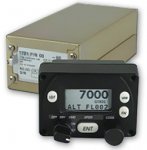Ok BarnStormer (Tim).... Correct me with the proper FAR's and Numbers.
Thanks Gabor,,, seats don't count....
Paul beat me to it, Steve...
The instructor sign-off sounds like a Sport Pilot (61.325) or Recreational Pilot (61.101) thing. As far as I can tell, a private pilot needs no such sign-off..
Correct. Controlled airspace is a required component of Private.
The bigger question for me is, why would you want to? I don't really care if my state allows powered skateboards on the freeway, it's just not safe. Especially as we move into the UAV era, and away from radar and into ADS-B for traffic alerts, I would expect controllers to get increasing cranky about people flying slow, transponderless toys wanting to mix it up with airliners full of people in their airspace.
Paul,
I can't answer this question for Doug but I can relate it to my own experience.
My airport is in a Mode C veil. My AC447 gyro had no electrical system driven by the engine so I did not worry about having a transponder with it.
My first 2 place, the AC SxS was powered by an EJ-22 so it did have an electrical system. At that point in my flying carrier I could not afford to install a transponder and encoding altimeter. Therefore I would call CVG tower before I flew any direction other than directly out of the veil.
Eventually, the guy at the tower got tired of me calling and told me not to bother calling for just veil activity, he told me to just call if I planned on entering the class B airspace. If this ever happens to you, get the controllers name and record it in your log book along with the time and date.
Calling is easy, the people are friendly though they might be confused or surprised the first time you call in as so few people actually call in like they are supposed to.
Another thing to note is that if you are traveling in a group of aircraft you can have just one of those aircraft with a transponder. It counts for the whole group so long as you stay reasonably close together and within about 500 ft of alt. Controllers actually prefer this. Every time I have flown through CVG class B in a group we have all been asked to turn off our transponders except for 1 aircraft.
In the veil there is no real concern about mixing it up with faster larger traffic unless you are at a very great altitude that most gyros don't fly in.
I would advise getting a copy of your local TAC (Terminal Area Chart) this will show you the path the jets take in and out of the big airport. So long as you don't fly UNDER this path with out a transponder you are not likely to tick anyone off. If you fly under this path the controllers don't know what altitude you are at from the radar display and they will start wondering about diverting traffic 10,000 ft above you. Staying out of this area will keep you from mixing it up with the big aircraft.
I have done several photo shoots in class B and class D airspaces in gyros that had no transponders. I called up approach, asked permission and they were very nice. I only had one 'bad' interaction with a controller and that was at a class D. It was not a big deal and if anyone wants to hear the story I am happy to tell it.
When I was in the class B airspace they gave me a 'box' that I could fly in all day. I just had to tell them when I was done with the event and leaving the box to go home. It was great. I got to buzz around taking photos of a big national canoe / kayak race with jumbos flying on final overhead but no need to have every turn and movement approved through the tower. Because there was a small airport in my box I was able to fly all day through 2 shifts of controllers before I left. No transponder, just a radio.
I now have a transponder installed in my gyro. Even used transponder systems are not cheap. The transponder will run about $500-$900 used, the coding altimeter will be about $250, $25 for the antenna, the cables about another $150 and then the REQUIRED check of the install another $100. Then you will need to have the system re-checked by an av-shop every 24 months at $100 a check.
Ironically, there is a transponder related piece of equipment that I think is making our sky's LESS safe!
Lots of the local GA pilots have these 'warning' devices that tell them if another transponder equipped aircraft is nearby.
It seems to me that LOTS of the local GA pilots are getting VERY lax about looking out of the window now and are expecting these little boxes to keep them out of a collision!
When flying with Connie in the Piper Cub or the Skyboy last year we got cut off, sometimes IN THE PATTERN by GA aircraft that should have seen us clearly. When I fly with some of my GA friends I see them watching these devices and not scanning the windows like they should be.
This 'new danger' is something we have to deal with outside of the C veil and is very disturbing to me.
I have now installed transponders in all of the family aircraft but it was not cheap and I had to sell my waverunner just to cover 1/2 of the expense.
.


